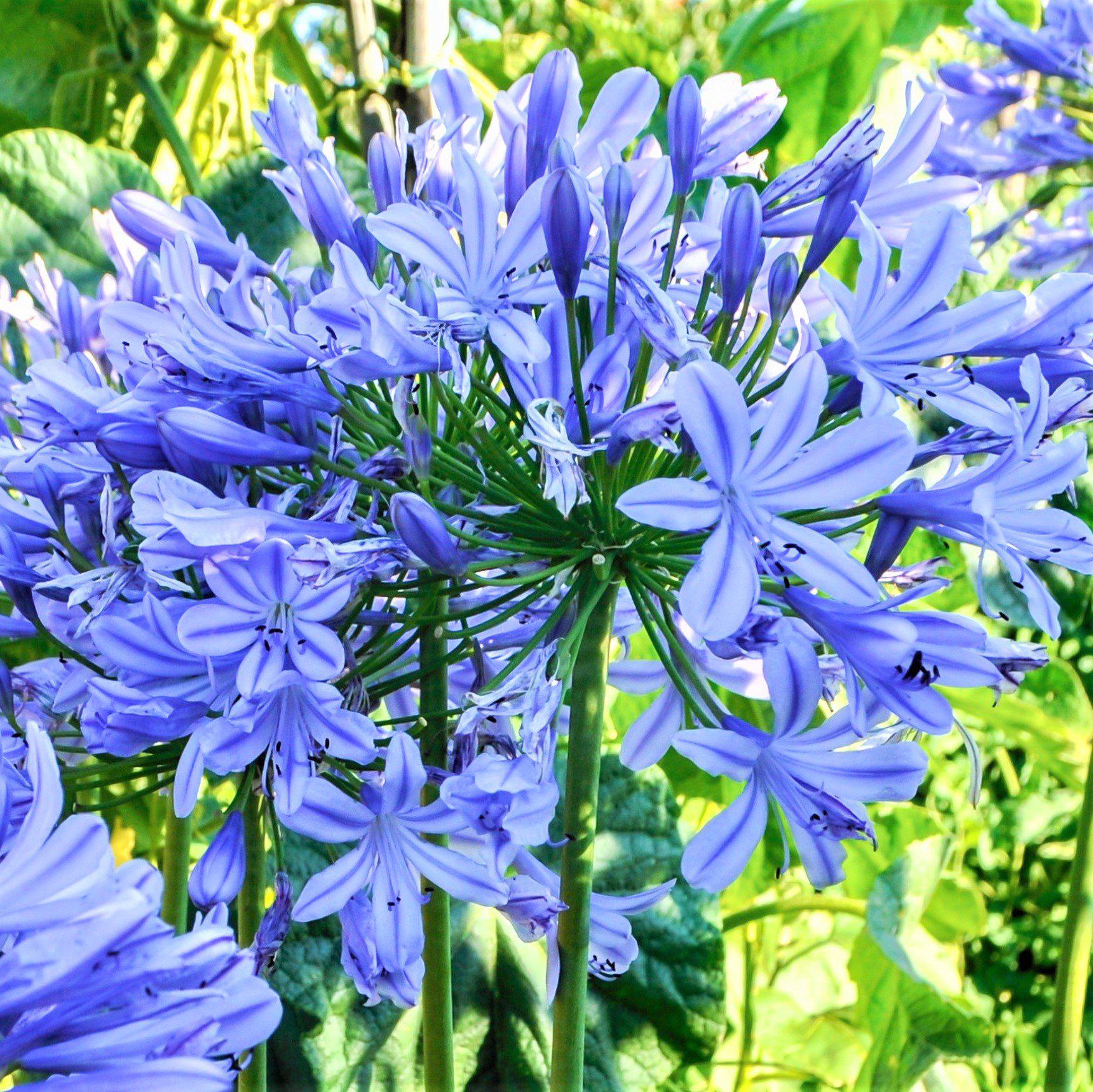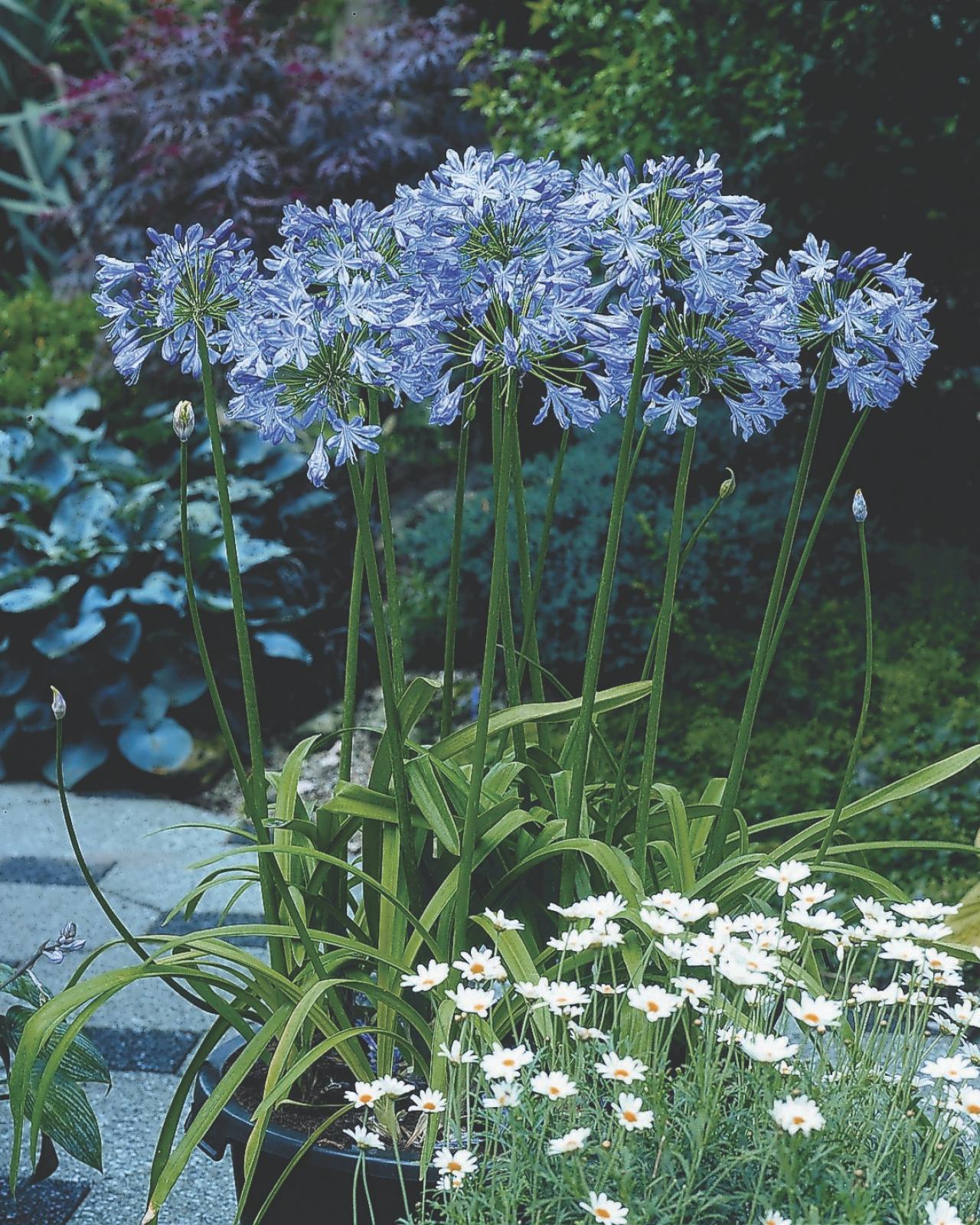Agapanthus Expanding Problems: Dirt, Sunshine, and Watering
Wiki Article
Understanding the Art of Agapanthus Treatment: Necessary Steps for Healthy Development and Lively Blooms
In the world of horticulture, the farming of agapanthus stands as a satisfying undertaking for those who look for to nurture these stylish flowering plants. From choosing the right selection to understanding pruning strategies, the journey towards cultivating thriving agapanthus plants is multifaceted and holds the key to opening the complete possibility of these organic gems.
Choosing the Right Agapanthus Variety

When picking the right Agapanthus selection for your yard, think about factors such as environment suitability, blossom shade, and development habit. Agapanthus, typically referred to as Lily of the Nile or African lily, can be found in a selection of shades varying from shades of purple and blue to white. Pick a bloom color that matches your existing yard combination to produce a harmonious landscape. Furthermore, consider the environment in your region to make sure the Agapanthus range you choose can prosper in your specific conditions. Some selections are more forgiving of chilly temperature levels, while others prefer warmer climates. Comprehending the growth habit of various Agapanthus varieties is vital for appropriate positioning within your yard. Some varieties have a clumping growth routine, suitable for containers or boundaries, while others have an even more spreading nature, ideal for ground cover or mass growings. By very carefully reviewing these factors, you can pick the perfect Agapanthus range to enhance the beauty of your garden.
Ideal Planting Problems
Taking into consideration the optimum ecological demands is necessary for successful Agapanthus growing. Agapanthus flourishes in well-draining soil with a slightly acidic to neutral pH degree. When growing, select an area that gets full sunshine to partial color. In hotter climates, supplying some mid-day shade can stop scorching of the leaves. Agapanthus plants are delicate to cold temperature levels and must be safeguarded from frost throughout winter months.To ensure healthy and balanced growth and vibrant flowers, plant Agapanthus bulbs at a deepness of concerning 2-4 inches and space them 8-12 inches apart. Adding raw material, such as garden compost, to the soil can boost water drainage and fertility, advertising durable root development. Mulching around the base of the plants helps retain wetness and suppresses weed growth. Normal watering is essential, specifically throughout the growing season, to maintain the soil continually wet however not soaked.
Watering and Fertilizing Tips
Keeping appropriate moisture degrees and supplying crucial nutrients are key components in the care routine for Agapanthus plants. When it comes to watering Agapanthus, it is critical to strike an equilibrium. These plants favor continually damp dirt yet are at risk to root rot if overwatered.Feeding Agapanthus is important for promoting healthy development and prolific flowers. Apply a well balanced plant food, such as a 10-10-10 formula, in the very early springtime as brand-new development arises. Repeat this application every 6-8 weeks throughout the expanding period. Stay clear of too much fertilizing, as it can lead to lavish foliage at the expense of blossoms. Always comply with the producer's directions for proper dilution and application approaches. By adhering to these watering and fertilizing pointers, you can try these out you can ensure your Agapanthus plants prosper and create dynamic, lasting blooms.
Pruning Techniques for Agapanthus
Pruning Agapanthus plants visit this site at the proper times and with correct strategies is crucial for maintaining their health and promoting optimum growth and blooming. The perfect time to trim Agapanthus remains in late winter months or very early spring before brand-new growth emerges. Begin by removing any type of yellowing or dead fallen leaves near the base of the plant. Cut them as close to the ground as feasible without harming the arising shoots.For flowered stems, wait till the blossoms have actually withered and then trim them back to the base. This not only cleans the plant's look yet likewise urges the development of brand-new flower buds. Deadheading spent blossoms can also redirect the plant's power visit our website into producing even more flowers as opposed to establishing seeds. However, if you wish to accumulate seeds for breeding, leave some flowers to mature and completely dry on the plant.
Remember to utilize tidy, sharp devices to make specific cuts and decrease the threat of introducing illness. Agapanthus. Routine trimming will certainly help keep your Agapanthus looking neat and healthy while making certain a plentiful display of beautiful flowers
Handling Usual Pests and Illness
After making sure appropriate trimming techniques for Agapanthus, it is crucial to attend to common bugs and diseases that can affect the wellness and vitality of these plants. Agapanthus plants are generally sturdy but can still succumb specific problems. One common insect that impacts Agapanthus is the Agapanthus gall midget. This tiny, orange fly lays its eggs in the foliage, leading to distorted growth and blossom buds that fail to open up. To fight this parasite, trim and destroy any kind of afflicted plant parts and take into consideration utilizing insecticidal soap.Furthermore, Agapanthus plants can endure from origin rot if they are planted in badly draining pipes soil. By being cautious and taking punctual activity versus parasites and diseases, you can assist your Agapanthus plants thrive and produce lively blossoms. Agapanthus.

Conclusion
In conclusion, understanding the art of agapanthus treatment involves choosing the right range, offering ideal growing conditions, correct watering and feeding, suitable trimming methods, and attending to common bugs and illness. By adhering to these essential actions, you can make certain healthy development and vivid blossoms for your agapanthus plants. Keep in mind to routinely keep an eye on and maintain your plants to advertise their total well-being and longevity.To guarantee healthy and balanced development and lively blossoms, plant Agapanthus light bulbs at a deepness of regarding 2-4 inches and area them 8-12 inches apart. By adhering to these watering and feeding tips, you can guarantee your Agapanthus plants prosper and create vivid, lasting blossoms.
One typical insect that affects Agapanthus is the Agapanthus gall midget. Additionally, Agapanthus plants can experience from origin rot if they are grown in poorly draining soil. By following these essential steps, you can make certain healthy development and vivid blooms for your agapanthus plants.
Report this wiki page